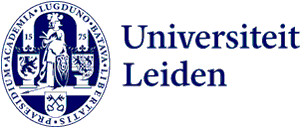
Maia Casna investigates respiratory disease in the past with an NWO PhD in the Humanities grant
Every year, an NWO PhD in the Humanities grant is awarded to a prospective PhD candidate at the Faculty of Archaeology. This year, the grant went to Maia Casna, enabling her to study respiratory disease in the past. ‘My hypothesis is that the rapid formation of cities in the medieval Netherlands, must have led to a severe impact on the respiratory health of their inhabitants.’

Skeletal remains
Since soft tissues like lunges usually decay after death, studying respiratory health in a population in the past means one focuses on skeletal remains. ‘Respiratory disease affects two parts of the body that are generally preserved,’ Maia Casna explains. ‘First of all the sinuses, cavities in the skull that filter air and control pressure on the face. Secondly the ribs, attached to the lunges’ membrane.’ Infections can be traced in the form of irregular bone growth, or the local destruction of bone tissue.
Blindness and pain
In the course of her research, Casna will review some 1000 skeletons. ‘I am looking at both males and females from all ages. Especially sinusitis was widely spread in the past. Up to 50% of the individuals shows signs of sinusitis.’ The causes of the disease are harder to discern. ‘It can be caused by bacteria, viruses, and even dental infections. It is associated with blindness and a lot of pain.’ It is not necessarily lethal though. ‘I have found signs of severe sinusitis in skeletons of old people, but no indications that this has caused their death.’

Complex questions
Casna focuses on a long period of time, investigating skeletal remains from 1200 to 1850 CE. ‘I have expanded my research into the early modern period. Changes in building techniques may have altered respiratory disease rates, while medicine started to develop as a science.’ Additionally, the early modern period saw an increase of governmental organisations taking care of sick people if they could not afford a doctor. ‘Due to all these factors, it is a complex question how the city impacted human health.’
It is a well-established fact that city dwellers were often more affected by diseases than their rural counterparts. The question remains, however, whether there was a difference between the various strata of society. ‘I recently presented part of my preliminary research on a conference. My tentative conclusions are that everyone in the city was pretty challenged in terms of health, regardless of status.’
Across the Netherlands
The following years, Casna will visit cities across the Netherlands, investigating scattered skeleton datasets. ‘I will look at skeletal material from cities like Alkmaar, Arnhem, and Vlissingen, while also looking at rural sites like Blokhuizen, for reasons of comparison.’ The skeletons are mostly excavated in emergency excavations. ‘There is this debate whether it is ethical to have these bones. But the thing is, the bones will be destroyed by new building projects if we do not take them out of the ground, which is also not very ethical in my point of view.’ The researchers handle the skeletal materials with dignity, cleaning the bones in the laboratory, and restoring them as much as possible. ‘Afterwards, depending on the municipality, the bones will be reburied in the town they came from.’
